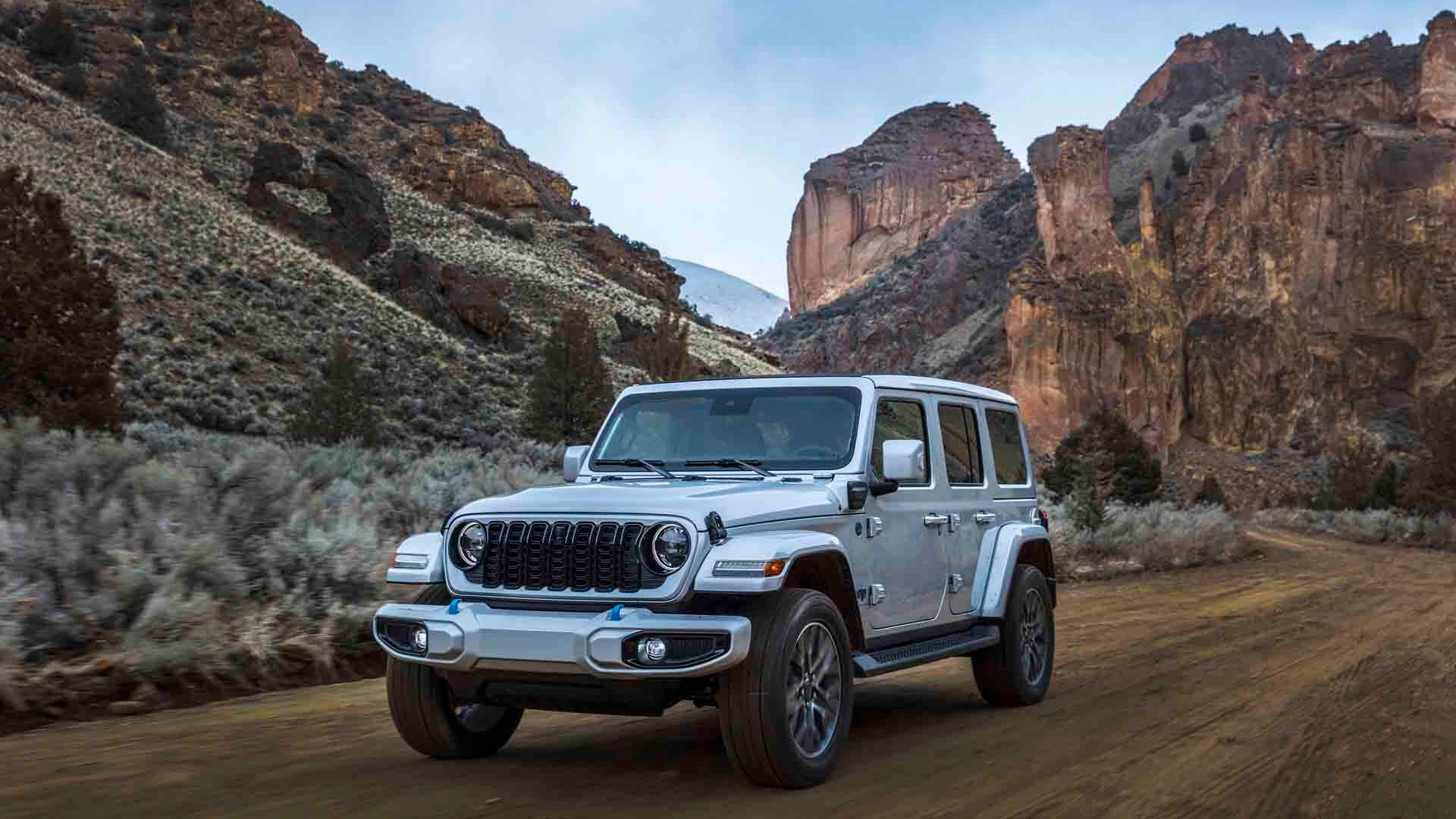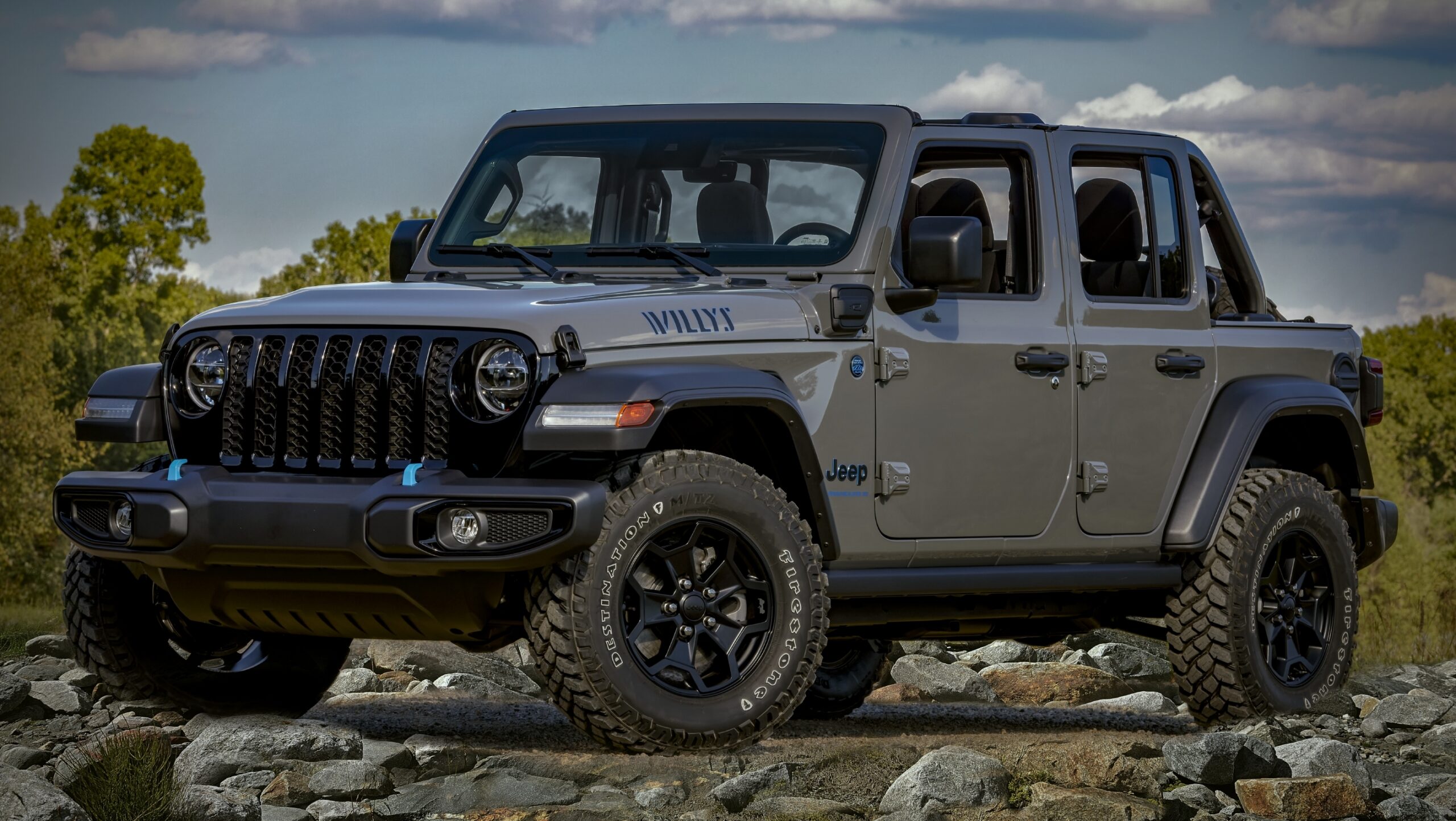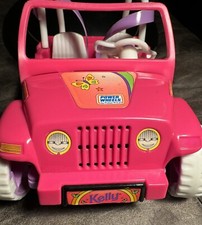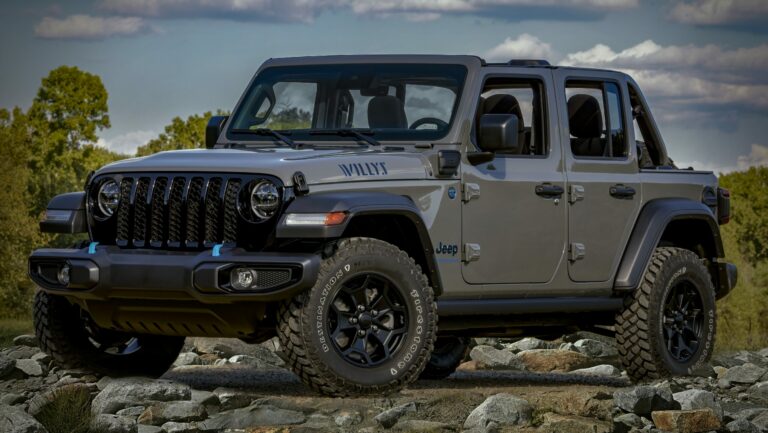Jeep Wrangler 3.0 Diesel: Unleashing Torque and Efficiency for the Trail and Beyond
Jeep Wrangler 3.0 Diesel: Unleashing Torque and Efficiency for the Trail and Beyond jeeps.truckstrend.com
The Jeep Wrangler has long been synonymous with rugged off-road capability, open-air freedom, and an unmistakable iconic design. While gasoline engines have traditionally powered this legendary vehicle, the introduction of the 3.0-liter EcoDiesel V6 engine offered a compelling alternative, bringing a new dimension of torque, fuel efficiency, and long-distance cruising prowess to the Wrangler lineup. For enthusiasts seeking an unparalleled blend of raw power for challenging trails and improved economy for daily commutes, the EcoDiesel Wrangler became a highly sought-after variant, redefining expectations for what a Wrangler could achieve. This comprehensive guide delves into every aspect of the Jeep Wrangler 3.0 Diesel, exploring its engineering, performance, benefits, considerations, and its unique place in the Wrangler’s storied history.
Jeep Wrangler 3.0 Diesel: Unleashing Torque and Efficiency for the Trail and Beyond
The Powerhouse Within: Understanding the 3.0L EcoDiesel V6 Engine
At the heart of the Jeep Wrangler 3.0 Diesel lies the formidable third-generation 3.0-liter EcoDiesel V6 engine. This powerplant, developed by Stellantis (formerly FCA) and manufactured by VM Motori, was specifically engineered to deliver robust performance and efficiency.
Key Specifications:
- Engine Type: 3.0L EcoDiesel V6
- Horsepower: 260 hp at 3,600 rpm
- Torque: A staggering 442 lb-ft at 1,400 rpm
- Transmission: Paired exclusively with an 8-speed automatic transmission (8HP75), optimized for diesel torque.
- Key Features: Variable Geometry Turbocharger (VGT) for optimal response across the RPM range, high-pressure common-rail injection system, and an advanced Exhaust Gas Recirculation (EGR) system to meet emissions standards.
![]()
What truly sets the EcoDiesel apart is its immense low-end torque. With 442 lb-ft available from just 1,400 rpm, the engine provides instant grunt, making it exceptionally well-suited for challenging off-road obstacles like rock crawling, steep ascents, and navigating deep mud or sand. This characteristic torque delivery also translates into superior towing capability and effortless highway cruising, where the engine loafs along at low RPMs, contributing to better fuel economy. Unlike its gasoline counterparts, the diesel engine prioritizes raw pulling power, offering a different, often more satisfying, driving experience for specific applications.
Performance and Capability: On and Off-Road Prowess

The integration of the 3.0L EcoDiesel engine profoundly impacts the Wrangler’s performance, both on the tarmac and in the wilderness.
Off-Road Mastery:
The EcoDiesel Wrangler truly shines off-road. The massive low-end torque allows for incredible control at slow speeds, reducing the need to feather the throttle and making precise maneuvers easier. This is particularly advantageous for technical rock crawling, where smooth, consistent power delivery prevents wheel spin and maintains traction. The engine’s inherent engine braking also assists in controlled descents, reducing reliance on the service brakes and minimizing fade on long downhill trails. The diesel’s ability to maintain power at lower RPMs also means less gear hunting, providing a more stable and predictable feel on challenging terrain.
On-Road Refinement and Efficiency:
While off-road capability is paramount for a Wrangler, the EcoDiesel significantly enhances its on-road manners. On highways, the engine’s torque allows for effortless acceleration and passing, even when fully loaded or towing. The 8-speed automatic transmission is finely tuned to leverage the diesel’s powerband, resulting in smooth shifts and optimal efficiency.
Fuel economy is another major highlight. The EcoDiesel consistently delivers better mileage than its gasoline counterparts, especially on the highway. Owners typically report combined figures in the low to mid-20s MPG, a substantial improvement for a vehicle of the Wrangler’s size and aerodynamic profile. This extended range means fewer fuel stops on long trips and more uninterrupted adventures. The diesel also provides a surprisingly quiet ride at cruising speeds, with the characteristic diesel clatter largely subdued once warmed up.
Key Benefits of Choosing the EcoDiesel Wrangler
Opting for the 3.0L EcoDiesel Wrangler brought several distinct advantages to the table, making it a compelling choice for specific buyers:
- Unmatched Torque for Off-Roading: As discussed, the 442 lb-ft of torque is the EcoDiesel’s biggest selling point. It translates directly to superior climbing ability, easier articulation over obstacles, and a more controlled low-speed off-road experience.
- Superior Fuel Economy and Range: For those who use their Wrangler for long commutes, road trips, or extended overlanding adventures, the improved fuel efficiency significantly reduces running costs and extends the vehicle’s range between fill-ups.
- Enhanced Towing Capability: The diesel’s robust torque output makes it an excellent choice for towing. With a towing capacity typically around 3,500 pounds (depending on configuration), the EcoDiesel handles trailers, small boats, or camping gear with greater ease and less strain on the engine compared to gasoline variants.
- Durability and Longevity: Diesel engines are often engineered for higher compression ratios and more demanding operating conditions, frequently leading to greater longevity and durability when properly maintained.
- Strong Resale Value (Historically): Due to its unique benefits and relatively limited availability, the EcoDiesel Wrangler often commanded a strong resale value in the used market.
Important Considerations and Potential Challenges
While the EcoDiesel offers numerous benefits, prospective and current owners should be aware of certain considerations:
- Higher Initial Cost: The EcoDiesel engine was always an optional upgrade, adding several thousand dollars to the Wrangler’s MSRP compared to the standard gasoline engines.
- Maintenance Complexity and Cost: Diesel engines typically require more specialized maintenance. This includes more frequent fuel filter replacements, specific diesel engine oil, and the need to manage Diesel Exhaust Fluid (DEF). While modern diesels are reliable, potential repairs can be more expensive due to the complexity of the fuel and emissions systems (e.g., DPF, DEF injector).
- Diesel Exhaust Fluid (DEF) Usage: The EcoDiesel requires DEF to meet stringent emissions standards. This fluid needs to be refilled periodically (typically every 5,000-10,000 miles, depending on driving style and conditions). Running out of DEF will limit vehicle speed or prevent starting, as a protective measure.
- Cold Weather Operation: While modern diesel engines are much improved, extreme cold can still pose challenges. Owners in very cold climates may need to consider fuel additives to prevent gelling and ensure the glow plugs are functioning correctly for reliable starts.
- Engine Weight: The diesel engine is heavier than its gasoline counterparts, which can slightly alter the vehicle’s weight distribution. While minor, this can be a consideration for extreme off-roaders modifying their suspension.
- Discontinuation for New Orders: Crucially, Stellantis announced the discontinuation of the 3.0L EcoDiesel V6 for the Jeep Wrangler JL after the 2023 model year. This means new EcoDiesel Wranglers are no longer available directly from the factory, making them a "historical" option for new vehicle purchases and focusing the market on used models.
Maintenance and Care for Your EcoDiesel Wrangler
Proper maintenance is paramount for ensuring the longevity and optimal performance of your EcoDiesel Wrangler.
- Regular Oil Changes: Use only synthetic diesel-specific oil that meets the manufacturer’s specifications (e.g., MS-12991). Follow the recommended oil change intervals, which might be shorter than for gasoline engines under certain conditions.
- Fuel Filter Replacement: Diesel fuel quality is critical. Regularly replace the fuel filters (often two – a primary and a secondary) as per the maintenance schedule. Clogged fuel filters can lead to reduced performance or even engine damage.
- DEF Monitoring and Refilling: Pay attention to the DEF gauge and refill the tank before it runs critically low. DEF is widely available at auto parts stores and many gas stations.
- Air Filter and Cabin Filter: Replace these as per schedule, especially if frequently driving in dusty off-road conditions.
- Diesel Particulate Filter (DPF) Regeneration: The DPF captures soot. The vehicle’s computer will periodically initiate a "regeneration" cycle to burn off this soot. Driving at highway speeds for a period helps facilitate this process. Short trips and excessive idling can hinder regeneration and potentially lead to DPF clogging issues.
- Glow Plugs: In colder climates, ensure the glow plug system is functioning correctly to aid in cold starts.
- Professional Servicing: Due to the complexity of diesel emissions and fuel systems, it’s advisable to have major services performed by technicians experienced with diesel engines.
Trim Levels and Availability (Historical Context)
When it was available, the 3.0L EcoDiesel V6 was offered as an optional engine upgrade across a range of Jeep Wrangler JL trim levels, including the Sport S, Sahara, and Rubicon. This allowed buyers to combine the diesel’s benefits with their preferred level of off-road capability and luxury features.
It’s important to reiterate that the 3.0L EcoDiesel V6 was phased out of the Jeep Wrangler lineup after the 2023 model year. This decision was part of Stellantis’ broader shift towards electrification and new engine technologies. As such, any new Wrangler purchased from the 2024 model year onwards will not have the EcoDiesel option. For those seeking a 3.0L EcoDiesel Wrangler, the focus is now entirely on the used vehicle market. This discontinuation may influence future parts availability or specialized service, though for the foreseeable future, support is expected to remain robust.
Practical Advice and Actionable Insights
For those considering a Jeep Wrangler 3.0 Diesel, particularly in the used market, here’s some practical advice:
- Define Your Needs: Is the higher torque for off-roading or towing your primary need? Are you genuinely seeking improved fuel economy for long distances? If your driving is primarily short city commutes, the benefits might not outweigh the increased initial cost and potential maintenance.
- Test Drive Both Gas and Diesel: If possible, test drive a gasoline Wrangler (2.0L Turbo or 3.6L Pentastar) alongside an EcoDiesel. Experience the differences in power delivery, noise, and overall driving feel to determine which suits your preferences.
- Factor in Long-Term Costs: While fuel economy is better, the higher cost of diesel fuel (in some regions), DEF refills, and potentially more expensive maintenance should be part of your long-term budget considerations.
- Inspect Service Records (Used Market): If buying used, demand complete service records. Pay close attention to consistent oil changes, fuel filter replacements, and DEF top-ups. A well-maintained diesel will serve you far better.
- Pre-Purchase Inspection: Have a qualified mechanic, ideally one with diesel experience, perform a thorough pre-purchase inspection. This can uncover potential issues with the emissions system, turbocharger, or fuel system before you buy.
Jeep Wrangler 3.0 Diesel: Estimated Pricing (Historical & Used Market)
The 3.0L EcoDiesel engine was an optional extra, adding to the base price of various Wrangler trims. Below is an approximate historical pricing structure for new models when the EcoDiesel was available, along with a general range for the current used market. Note: Actual prices will vary significantly based on model year, mileage, condition, trim level, options, and geographic location.
| Model Year | Trim Level | Base MSRP (approx.) | EcoDiesel Option Cost (approx.) | Total MSRP (approx. with EcoDiesel) | Estimated Used Market Price Range (2024) |
|---|---|---|---|---|---|
| 2020-2023 | Sport S | $38,000 – $45,000 | $4,000 – $6,000 | $42,000 – $51,000 | $30,000 – $45,000 |
| 2020-2023 | Sahara | $42,000 – $52,000 | $4,000 – $6,000 | $46,000 – $58,000 | $35,000 – $50,000 |
| 2020-2023 | Rubicon | $45,000 – $58,000 | $4,000 – $6,000 | $49,000 – $64,000 | $40,000 – $55,000+ |
| 2020-2023 | High Altitude | $50,000 – $65,000+ | $4,000 – $6,000 | $54,000 – $71,000+ | $45,000 – $60,000+ |
Important Disclaimer: The "Estimated Used Market Price Range" is highly speculative and subject to rapid change based on supply, demand, vehicle condition, maintenance history, and specific features/modifications. Always consult current market data from reputable sources like Kelley Blue Book, Edmunds, or local dealerships for the most accurate pricing.
Frequently Asked Questions (FAQ) about the Jeep Wrangler 3.0 Diesel
Q1: Is the 3.0L EcoDiesel still available in new Jeep Wranglers?
A1: No, the 3.0L EcoDiesel V6 engine was discontinued for the Jeep Wrangler JL after the 2023 model year. It is no longer available as an option on new vehicles from the factory.
Q2: What is the main advantage of the EcoDiesel over the gasoline engines?
A2: The primary advantage is its massive low-end torque (442 lb-ft), which provides superior off-road capability for crawling and enhanced towing capacity. It also offers significantly better fuel economy, especially on the highway.
Q3: How often do I need to refill the Diesel Exhaust Fluid (DEF)?
A3: DEF refill intervals vary based on driving style and conditions, but typically range from 5,000 to 10,000 miles. The vehicle’s onboard computer will provide warnings as the DEF level gets low.
Q4: Is diesel maintenance more expensive than gasoline engine maintenance?
A4: Generally, yes. Diesel engines often require specific, more expensive oils, more frequent fuel filter replacements, and the cost of DEF. Potential repairs to complex emissions systems can also be higher.
Q5: Can the EcoDiesel Wrangler tow more than the gasoline versions?
A5: While the maximum towing capacity for the Wrangler generally tops out around 3,500 pounds for the 4-door models, the EcoDiesel’s higher torque makes it feel much more capable and less strained when towing near its limit, providing a more relaxed towing experience.
Q6: Is the EcoDiesel noisy or rough to drive?
A6: Modern diesel engines like the EcoDiesel are much more refined than older diesels. While there’s a characteristic diesel clatter at idle or under hard acceleration, it’s generally well-insulated, and at highway speeds, it’s surprisingly quiet and smooth.
Q7: Are there any specific issues to watch out for with the EcoDiesel engine?
A7: Common areas to monitor include the Diesel Particulate Filter (DPF) for proper regeneration, the DEF system for sensor failures or crystallization, and potential turbocharger issues, as with any forced induction engine. Regular, diligent maintenance is key to preventing these.
Conclusion
The Jeep Wrangler 3.0 Diesel, though no longer available new, carved out a significant niche for itself in the Wrangler lineup. It offered a unique proposition, combining the Wrangler’s legendary off-road prowess with the brute strength of diesel torque and impressive fuel efficiency. For the dedicated off-roader who demands ultimate low-end power, the overlander seeking extended range, or the daily driver who appreciates robust performance and better MPG, the EcoDiesel was a dream come true. While it came with a higher upfront cost and more involved maintenance, the benefits for the right buyer were undeniable. As these powerful diesel Wranglers transition into the used market, they remain a highly desirable option for those who understand and value the distinct advantages of diesel power in such an iconic vehicle. The EcoDiesel Wrangler stands as a testament to Jeep’s willingness to innovate and cater to diverse enthusiast needs, solidifying its place as a truly versatile and capable machine.





